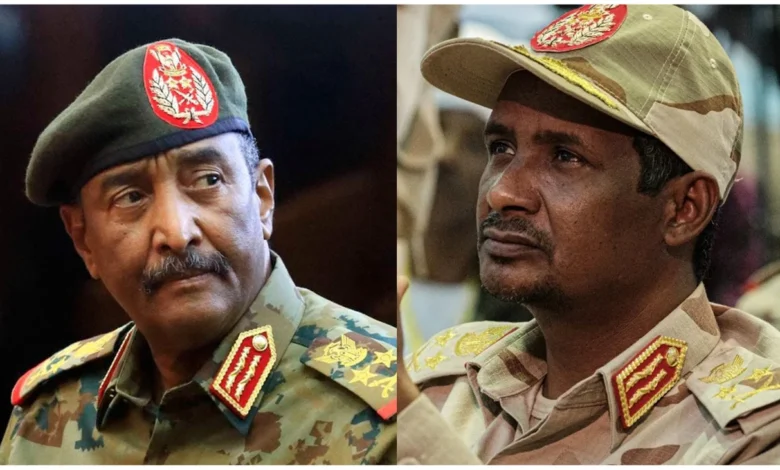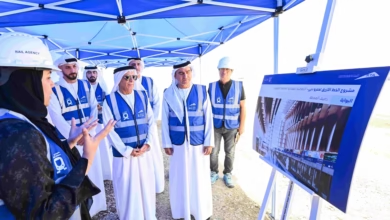
Inside US Diplomatic Push to End Sudan’s Deadly Conflict
The WHO reports that Sudan’s devastating conflict has claimed at least 40,000 lives, which raises an urgent question: Will the US’s ceasefire plan succeed where others have failed? The war raging between the Sudanese Armed Forces (SAF) and the paramilitary Rapid Support Forces (RSF) has forced nearly 13 million people from their homes. Half of those who remained now face acute food insecurity. Famine has already struck parts of the country and experts predict it will spread further.
A new US-backed initiative might offer a breakthrough, as the RSF has agreed to a humanitarian truce proposal after many failed attempts. The conflict erupted in 2023 between former allies who were supposed to guide the democratic transition. Experts now call this the world’s worst humanitarian crisis. Many Sudanese notice what seems like international abandonment, and thousands died in El Fasher after the paramilitary group captured army installations last month. This diplomatic effort comes at a crucial time when regional stability and millions of lives hang in the balance.
RSF accepts US-backed ceasefire proposal
Image Source: NBC News
The Rapid Support Forces (RSF) accepted a US-backed proposal for a humanitarian ceasefire in Sudan’s devastating conflict on Thursday. This marks the first major diplomatic breakthrough since the paramilitary group’s recent military gains.
RSF signals willingness to negotiate cessation of hostilities
The RSF released a formal statement agreeing to the “humanitarian ceasefire” proposed by the quad mediator group of the United States, Saudi Arabia, Egypt, and the United Arab Emirates. The paramilitary group showed eagerness to put the agreement into action and stated they “look forward to implementing the agreement and immediately commencing discussions on arrangements for a cessation of hostilities”. The RSF also highlighted their commitment to address “the catastrophic humanitarian consequences of the war” and improve “protection of civilians” through this truce.
Timing of the announcement after El Fasher takeover
The ceasefire acceptance came just days after the RSF seized El Fasher, which was the Sudanese army’s last major stronghold in the Darfur region. This military victory gave the RSF control of more than a quarter of Sudan’s territory. Reports soon emerged about mass killings and civilian abductions by RSF fighters in the newly captured city. UN figures show more than 70,000 people fled El Fasher and surrounding areas. Some analysts believe the RSF timed the ceasefire announcement to shift attention away from these atrocity allegations.
Initial silence from Sudanese army leadership
The Sudanese Armed Forces haven’t officially responded to the RSF’s acceptance of the truce proposal. The army-led Security and Defense Council met earlier this week but gave no clear answer about the US initiative. Military leaders have shown disapproval of the terms. The army stated it would only accept a ceasefire if the RSF pulls out of civilian areas and gives up its weapons, as previous peace proposals required. Army chief Abdel Fattah al-Burhan took a tough stance in a televised address, saying his forces were “striving for the defeat of the enemy” and would “soon avenge those who have been killed and abused”.
The US’s ceasefire plan aims for a three-month humanitarian truce followed by a nine-month political process. Notwithstanding that, the clear difference between the RSF’s acceptance and the army’s aggressive position raises questions about whether this plan can work.
US and Arab nations push for humanitarian truce
Image Source: The New York Times
“The United States is actively engaged in efforts to bring about a peaceful resolution to the terrible conflict in Sudan. We remain committed to working with our international partners, including Quad members — Egypt, Saudi Arabia and the UAE — as well as others to lead a negotiated peace process that addresses both the immediate humanitarian crisis and the longer-term political challenges.” — Karoline Leavitt, White House Press Secretary
The diplomatic push for peace in Sudan gained momentum in September. The Quad, a mediator group, revealed a detailed plan to end the devastating conflict. Their roadmap stands as the most important diplomatic initiative on Sudan in over a year.
What the three-month truce entails
The proposal centers on a three-month humanitarian truce that will enable “the swift entry of humanitarian aid to all parts of Sudan”. This original phase addresses the immediate humanitarian crisis before moving to a permanent ceasefire. The truce would “ensure the urgent delivery of humanitarian assistance to all Sudanese people” and improve civilian protection in conflict zones. This temporary pause in fighting puts humanitarian access ahead of political solutions.
Nine-month transition plan to civilian rule
The proposal moves beyond the three-month truce to outline a nine-month political process that establishes a new government. This transition should “meet the aspirations of the Sudanese people towards smoothly establishing an independent, civilian-led government with broad-based legitimacy and accountability”. The plan requires that no warring party controls the transition process and excludes “violent extremist groups part of or evidently linked to the Muslim Brotherhood”.
Role of the Quad: US, Saudi Arabia, UAE, Egypt
The Quad countries—the United States, Saudi Arabia, United Arab Emirates, and Egypt—have “the most sway with the Sudanese army and the paramilitary Rapid Support Forces”. Their September joint statement showed “a unified commitment to use its collective leverage to end the war”. The group faced challenges before reaching consensus. “Forging consensus proved tricky”, and a scheduled ministerial meeting was postponed due to disagreements between Egypt and the UAE.
Statements from US State Department and advisors
A US State Department spokesperson stressed, “We urge both sides to move forward in response to the US-led effort to conclude a humanitarian truce, given the immediate urgency of de-escalating the violence and ending the suffering of the Sudanese people”. Massad Boulos, US senior adviser for Arab and African affairs, shared that efforts continued steadily. “We have not recorded any initial objection from either side. We are now focusing on the fine details”. Boulos added later, “We were working on this for the last almost 10 days with both sides, hoping to finalize the details”.
Sudan ceasefire efforts face resistance and mistrust
Image Source: Peoples Dispatch
“Preparations for the Sudanese people’s battle are ongoing. Our preparations for war are a legitimate national right.” — Hassan Kabroun, Sudan Defense Minister
Deep distrust continues to undermine the latest peace initiative for Sudan. Both sides remain skeptical about each other’s true intentions.
Army’s conditional response to RSF withdrawal
The Sudanese Armed Forces (SAF) has established strict conditions for any ceasefire agreement. They will only accept a truce when the RSF completely withdraws from civilian areas and surrenders its weapons. SAF’s leader General al-Burhan emphasizes his forces’ readiness to fight until they achieve total victory. He describes the conflict as a struggle to “purify” the nation.
History of failed ceasefires and the Jeddah Declaration
Ceasefire attempts have failed repeatedly. Both warring parties signed the May 2023 Jeddah Declaration that outlined detailed civilian protection commitments. The subsequent agreements broke down almost immediately, often within 24 hours. Sudanese people now joke that explosions they hear are “the sound of the ceasefire”.
Concerns over foreign influence and proxy dynamics
Peace efforts face complications from regional powers and their competing interests. Egypt and Saudi Arabia support the SAF generally, while the UAE faces accusations of backing the RSF. Russia sought to court both sides before choosing to favor the SAF. These external players provide weapons, financing, and diplomatic cover that extends the conflict.
Reactions from Sudanese government and civil society
Sudanese civilians oppose military involvement in future governance structures. They recognize that peace becomes impossible if armed factions are excluded. The civilian democratic movement remains split about working with military leaders. This division creates additional barriers to implementing any lasting ceasefire.
Civilians suffer amid famine and war crimes
Image Source: UN News – the United Nations
Famine and atrocities have reached catastrophic levels in Sudan. Humanitarian organizations have documented horrific war crimes while widespread starvation continues.
UN and MSF reports on atrocities in El Fasher
MSF has documented mass killings and ethnically targeted violence in El Fasher after its capture by the RSF. The organization found that all children under five who arrived from El Fasher showed acute malnutrition. A staggering 57% suffered from severe acute malnutrition. MSF received 396 injured people from El Fasher between October 26-29. These victims had gunshot wounds, fractures, and torture injuries.
Famine in North Darfur and South Kordofan
El Fasher, Kadugli and multiple areas across Darfur and Kordofan now face confirmed famine conditions. The crisis affects 21.2 million people—45% of Sudan’s population—who face acute food insecurity. Global Acute Malnutrition rates have reached alarming levels, ranging from 38% to 75% in El Fasher and 29% in Kadugli.
Obstacles to humanitarian aid delivery
The ongoing conflict severely limits humanitarian access. Aid convoys face delays, denials, and security threats. Targeted attacks killed at least 30 humanitarian workers throughout 2025. Many communities remain cut off from assistance as a result.
Eyewitness accounts and verified war crime evidence
Survivors have reported systematic violence including mass executions. One survivor paid 24 million Sudanese pounds (€34,000) to escape captivity. Another saw RSF fighters crushing prisoners with vehicles. Women face extreme risks, as reports show widespread sexual violence.
Effects on displaced populations and food insecurity
The conflict has created the world’s largest displacement crisis, forcing over 12 million people from their homes. Health systems have collapsed in the worst-hit areas, leading to cholera, malaria, and measles outbreaks. The worst-affected regions now have only one working health facility out of four.
Sudan faces a turning point as the conflict between the Sudanese Armed Forces and Rapid Support Forces tears the nation apart. The RSF has accepted the US-backed ceasefire proposal, which could change everything. Past peace deals fell apart within hours, so everyone needs to stay realistic about this diplomatic breakthrough.
The new peace plan lays out a clear path: a three-month humanitarian pause followed by a nine-month shift to civilian rule. The stark difference between RSF’s acceptance and the army’s aggressive position raises real doubts about whether it will work. General al-Burhan demands that RSF forces leave civilian areas and give up their weapons, showing how deep the mistrust runs between both sides.
The Sudanese people continue to pay the highest price. Famine spreads faster across Darfur and Kordofan while reports of atrocities keep growing. The crisis has forced over 12 million people from their homes – now the world’s biggest humanitarian emergency. Almost half the country doesn’t have enough food to eat.
Regional powers make peace harder to achieve as they push their own interests through proxy support. Egypt and Saudi Arabia tend to back the SAF, while the UAE faces claims of supporting the RSF. These outside players ended up extending civilian suffering by providing weapons, money, and diplomatic protection.
The Quad mediator group’s united diplomatic effort represents the best chance for peace in over a year. Having the United States, Saudi Arabia, Egypt, and the UAE involved brings more influence than previous peace attempts. Success depends on both sides showing they really want peace, not just making tactical moves.
Sudan’s destiny remains uncertain. The world must keep pushing both sides toward peace while helping those in desperate need. The road to lasting peace has many obstacles, but this diplomatic momentum offers a tiny ray of hope that we can’t waste – millions of lives depend on it.






